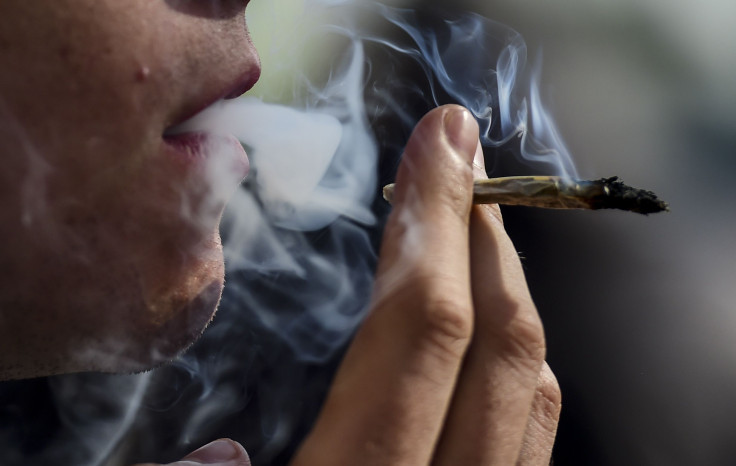Is Marijuana Better Than Alcohol? Diseases Cannabis Can Cure

Recreational marijuana, which was legalized in Washington, D.C. and decriminalized in February 2015 in Alaska has been deemed to be less dangerous as compared to both tobacco and alcohol, according to several scientists.
Scientists have argued over the years about the safety of cannabis in comparison to alcohol, however in a report published in January 2015 in Scientific Reports, researchers measured the potential harm caused by each of these drugs in a more quantitative manner, by comparing a lethal dose with how much of the substance is typically consumed socially.
Read: Marijuana Legalization: Legal Weed Use Causes Increase In Car Crashes, Study Proves
The report found that the dangers of marijuana “may have been overestimated in the past,” while the risk of alcohol has been “commonly underestimated,” according to the researchers.
The report compared the potential of death from the typical and recreational use of 10 drugs: marijuana, alcohol, tobacco, heroin, cocaine, ecstasy, methamphetamine, diazepam, amphetamine and methadone. According to the findings, cannabis was found to be safest among the drugs and also when specifically compared to cigarettes and alcohol.
Lead author of the report, Dirk Lachenmeier, told NBC News in 2015 that the findings: “Confirm earlier results of other study groups [but] with completely different methodology.” And while the results of the study may not be surprising, “the absolute differences in riskiness between substances” was found to be higher than expected.
Marijuana and alcohol are often placed against each other in order to determine which between the two is healthier. The Huffington Post, in one of their reports in 2013, claimed that “a marijuana smoker would have to consume 20,000 to 40,000 times the amount of THC [Tetrahydrocannabinol] in a joint in order to be at risk of dying” and that there were no deaths reported only from smoking weed, citing a study published by the American Cancer Society. The study also suggested that the THC in cannabis has significant therapeutic values while treating cancer, glaucoma and AIDS.
However, the case is not similar for alcohol. The World Health Organization (WHO) found almost 3.3 million deaths in 2012 were due to excessive alcohol consumption. The WHO report claimed that marijuana doesn't lead to equal number of deaths as alcohol; however, they do have serious side effects on a human body. Both the psychoactive drugs, affect cognition or the functioning of the mental processes when taken or administered, according to WHO’s report.
Read: Pot Pizza Is The Latest Sensation At Massachusetts Medical Marijuana Dispensary
However, it has been found from several studies and reports that medical marijuana is effective and are now being used to treat diseases like AIDS, Alzheimer’s and others alike. Here are five such diseases:
AIDS: A small study of 50 individuals who smoked marijuana registered lesser neuropathic pain than those who did not smoke marijuana. In a study conducted on 10 HIV-positive marijuana smokers, researchers found that those who smoked cannabis had a better appetite, were sound sleepers and were in a better mood.
Epilepsy: Parents of young epilepsy patients are advocating for medicinal marijuana as an alternative treatment. This has been making headlines for quite some time now. Cannbidiol (CBD), a derivative compound of marijuana that is rid of psychoactive properties, basically the substance that gets you high, is being used to treat seizures and epilepsy. Researchers at NYU Langone Medical Center in New York, in 2015, found out that there has been a decrease of 50 percent in the frequency of seizures for people who are being treated with CBD.
Glaucoma: A leading cause of blindness is glaucoma. The effect of THC in treating this illness has both pros and cons. While it reduces eye pressure, it also considerably decreases the blood pressure of the patient. This can be detrimental to the optic nerve as there would be reduced blood supply to the region. But a study also found that THC can be used to preserve the nerves.
Asthma: Even though we have contradictory studies on the subject, some early works suggested that cannabis reduces exercise induced asthma. In spite of some patients experiencing a tightening feeling in their throat and chest, some studies showed that marijuana dilates human airways. An experiment on mice showed similar results.
Alzheimer's: Aggression, depression, anxiety, hallucinations and insomnia — the regular symptoms of people suffering from Alzheimer’s diseases — is being reduced by controlled use of marijuana. Cannabis has been proven to slow down the production of beta-amyloid proteins, which scientists consider to be the main ingredients that propagate Alzheimer’s. This shows that the plant possibly delays and might as well prevent the inception of the disease.
© Copyright IBTimes 2024. All rights reserved.












